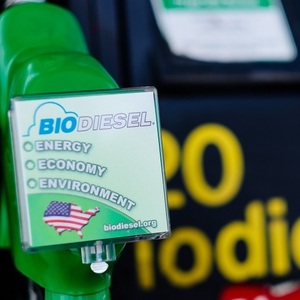Biodiesel can help Wash. cut fuel carbon intensity 16.5% by 2030

January 11, 2019
BY Ron Kotrba
According to a new analysis commissioned by the Union of Concerned Scientists and conducted by independent research firm Cerulogy on the availability of low-carbon fuels to meet a Washington State clean fuels program, the state can reduce the carbon intensity of transportation fuels by 11.2 percent by 2028.
Transportation is the largest source of carbon emissions in Washington. The state must cut greenhouse gas emissions by nearly 16 million metric tons per year to meet its self-imposed 2035 carbon emissions limit. According to the UCS, Washington is not on track to meet this goal.
The state legislature is expected to consider a bill modeled after last year’s House Bill 2338 that would require petroleum refineries and fuel importers to reduce the average carbon intensity of fuels they sell in Washington by 10 percent of 2017 levels by 2028, similar to programs in California and Oregon. Refineries and fuel importers can reduce carbon intensity by blending low-carbon biofuels into petroleum-based fuels they sell, or by purchasing credits generated by providers of lower-carbon fuels, including biodiesel, renewable diesel, ethanol and more.
Advertisement
Advertisement
According to Gov. Jay Inslee’s administration, the proposed clean fuels program would achieve nearly half of the emissions reductions needed in the transportation sector.
“Washington must clean up its fuel supply if it is serious about reducing its carbon emissions and doing its part to avoid the worst impacts of climate change,” said Jeremy Martin, director of fuels policy at UCS. “State leaders have the ability to significantly reduce carbon emissions and air pollution, and further cement Washington’s role as a climate leader.”
Advertisement
Advertisement
The fuel pathways available to achieve the 11.2 percent reduction in carbon intensity of transportation fuels by 2028 include biodiesel, renewable diesel, ethanol and electricity.
Under an even more ambitious scenario, Cerulogy’s analysis shows that “with increased deployment and emissions reductions from biodiesel, ethanol and renewable natural gas, emissions reductions of 13.1 percent by 2028 and 16.5 percent by [2030] are achievable.”
The research, titled “Washington’s Clean Fuels Future,” was conducted by Chris Malins, who has a doctorate in applied mathematics from the University of Sheffield. Malins was the former fuels program lead at the International Council on Clean Transportation and is an independent global expert on low carbon and clean fuels policy.
Related Stories
California’s new specified source feedstock attestation requirement: A critical new compliance step for renewable fuel producers
As of July 2025, California’s SCFS requires renewable fuel producers using specified source feedstocks to secure attestation letters reaching back to the point of origin. This marks a significant shift in compliance expectations.
The public comment period on the U.S. EPA’s proposed rule to set 2026 and 2027 RFS RVOs and revise RFS regulations closed Aug. 8. Biofuel groups have largely expressed support for the proposal but also outlined several ways to improve the rulemaking.
The U.S. renewable fuels industry on Aug. 8 celebrated the 20th anniversary of the Renewable Fuel Standard. Federal lawmakers also marked the occasion with resolutions introduced in the House and Senate earlier this month.
Iowa farmers have a new market opportunity for their 2025 soybean crop. Landus is expanding its Clean Fuel Regulation initiative, made possible by recent policy changes expected to increase Canada's demand for liquid biofuel.
Klobuchar, Moran introduce bipartisan legislation to support biorefineries, renewable chemicals, and biomanufacturing
Sens. Amy Klobuchar, D-Minn., and Jerry Moran, R-Kan., on July 31 announced the introduction of the Ag BIO Act. The legislation aims to update the USDA’s loan guarantee program to better support biorefining projects.
Upcoming Events










